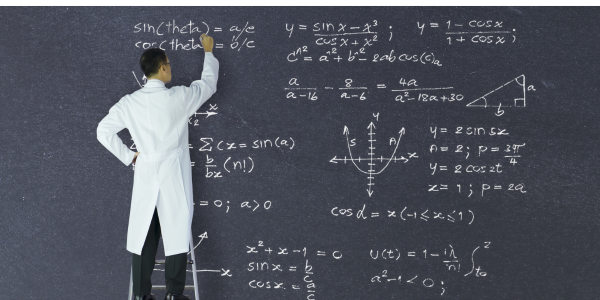
Key takeaways
- Federal Reserve Chair Jerome Powell gave opening remarks at the Kansas City Fed’s annual Jackson Hole Conference, a key market-moving event
- Powell's speech comes at a pivotal time for the Fed, as inflation is still well above its target
- Powell addressed what the Fed's next move is in light of recent soft economic data and reiterated that sustained progress is needed to bring inflation down to 2%
- Powell warned that policy needs to remain restrictive in order to achieve lower inflation, but did not indicate more rate hikes are necessary
- Powell emphasized the Fed remains committed to the 2% inflation target and confirmed it would do whatever is needed in order to reach it
On Friday, Federal Reserve Chair Jerome Powell gave the opening remarks at the Kansas City Fed’s annual economics symposium, often referred to as the Jackson Hole Conference.
This highly-anticipated event has produced some major market-moving speeches in the past. One such address was delivered by former Chair Ben Bernanke when he made his case for a second round of quantitative easing in 2010.
Another notable speech occurred in 2020 when Chair Powell announced the Fed’s shift to average inflation targeting regime. Then, Chair Powell delivered an aggressively hawkish speech last year, triggering a harsh 6-week stock selloff.
Nothing quite that momentous came this year, but still, Powell’s speech comes at a pivotal time for the Fed. Inflation is still well above the Fed’s target, yet Powell has previously signaled that their rate hiking cycle is near an end.
Does this mean the Fed is no longer committed to bringing inflation all the way down to 2%? And if the Fed is about to pause hikes, what conditions could cause them to start hiking again, or for that matter, start cutting rates?
Powell addressed all of this in this year’s speech. Here’s what he said and what it means for investors going forward.
What’s the Fed’s next move?
We last heard from Powell in his press conference after the July 26 Fed meeting. At that meeting, the Fed hiked, but Powell went out of his way to make no promises, leaving the door open to both an extended pause or additional hikes.
Since then, data on both jobs and inflation have been softer than expected. If anything, this makes it less likely that the Fed will choose to hike again in 2023. However, Powell remains unsure.
While calling the improved inflation data “welcomed,” he still warned that “there is substantial further ground to cover to get back to price stability.”
Thus, the overall message was similar to what he said in July: it all depended on how economic data evolves. If inflation kept falling, the Fed could be done hiking. If it doesn’t, they’ll be back at it.
Higher for longer?
Powell also warned that the Fed was not going to overreact to nascent signs of better inflation data.
“Sustained progress is needed, and restrictive monetary policy is called for to achieve that progress.”
Here, Powell chose his words carefully. Later in the speech, he said that Fed officials “see the current stance of policy as restrictive,” which adds vital context to the “sustained progress” statement.
What Powell is saying is that policy needs to remain restrictive in order to achieve lower inflation. He is not necessarily saying more hikes are required, but he is saying that the Fed isn’t likely to lower rates anytime soon.
Powell noted that no one really knows precisely how restrictive monetary policy is at any given moment. Economists believe there is some interest rate that is neutral, i.e., neither stimulates nor restricts economic activity. That rate is called “r star” or sometimes abbreviated as “r*.”
The trouble is that we cannot observe what r* is in real-time, and it is generally believed that it changes depending on what else is going on in the economy.
Powell made an oblique reference to this challenge in this speech when he said, “We are navigating by the stars under cloudy skies.” This statement was a nod to a prior Jackson Hole speech where Powell was critical of using estimates of r* to make policy decisions.
Fed remains committed to a 2% inflation target
Some prominent economists have recently argued that the Fed should raise their inflation target. Former Chair of the Council of Economic Advisors Jason Furman recommended targeting 3% instead of 2% in a Wall Street Journal piece just this week.
Despite such chatter, Powell is showing no signs of wavering. In this speech, he said flatly, "2% is and will remain our inflation target.”
Furman and others make many good points about why a slightly higher target might have benefits. However, as investors, we are focused on what will happen. It is easy to be distracted by these hypotheticals, but doing so will almost certainly harm your investment returns.
Whenever Powell has been asked about changing the inflation target, he has forcefully denied such a thing would be considered. During his semi-annual congressional testimony in June, Powell said, “Nothing will happen during my tenure that will cause us to reconsider” the 2% target.
The fact that this came up during a congressional hearing is meaningful. While the Fed has the authority to change its inflation target, doing so would have significant political consequences.
A recent Pew Research poll ranked inflation as the #1 item Americans believed was a “very big problem,” with a majority of Republicans and Democrats sharing that view. Any action by the Fed that implied it was OK with higher inflation would almost certainly draw scrutiny from Congress, which is something the Fed will want to avoid.
There will come a time when the Fed could face additional challenging trade-offs. For example, what would it do if inflation settled in at 2.4 or 2.5%? Would it work aggressively to get it down to 2%? That’s an open question. But there is clearly no sign it is considering a formal change to its inflation target.
What does this mean going forward?
Our view remains that the Fed is most likely done with rate hikes for 2023. Powell talked equally about the risk of tightening too much and too little:
“We will proceed carefully as we decide whether to tighten further or, instead, to hold the policy rate constant and await further data.”
To be sure, 1-2 additional hikes are conceivable, but we think it would take an upside surprise in inflation data to see any more Fed tightening.
Looking into 2023, we think the most likely scenario is that the Fed will keep interest rates approximately this high for several months.
From there, if inflation shows a clear and persistent downward trend over the next 9-12 months, that might be enough for Powell’s “sustained progress” test. At that point, the Fed might be satisfied that policy could be somewhat less restrictive and start cutting rates by some degree.
However, if inflation does anything but show consistent improvement, the Fed will probably keep interest rates steady. Powell will aim not to do too much or too little, but if he has to choose, he will err on the side of stamping out inflation.
In his conclusion, he repeated a line he’s said many times:
“It is the Fed’s job to bring inflation down to our 2 percent goal, and we will do so.”


